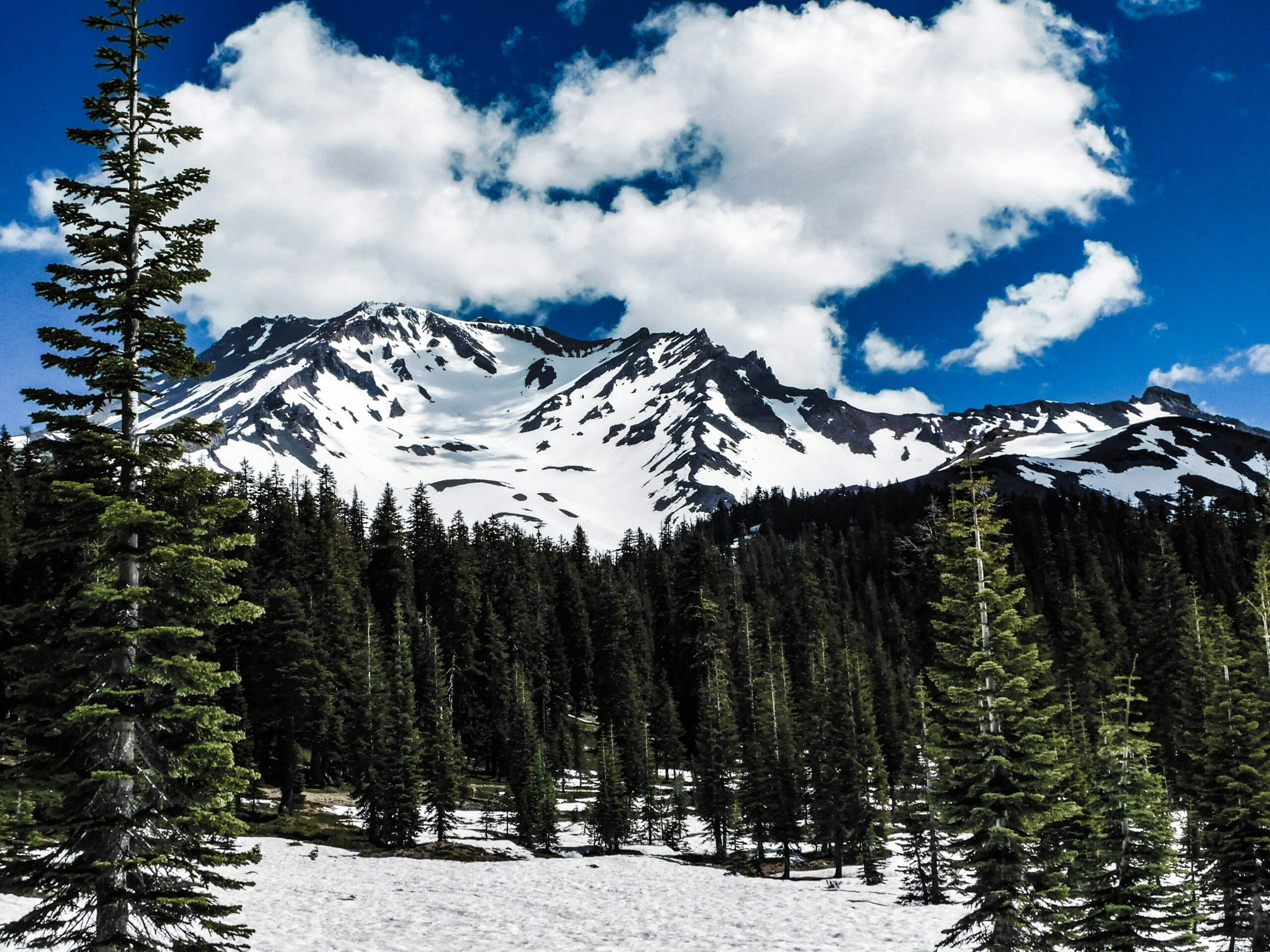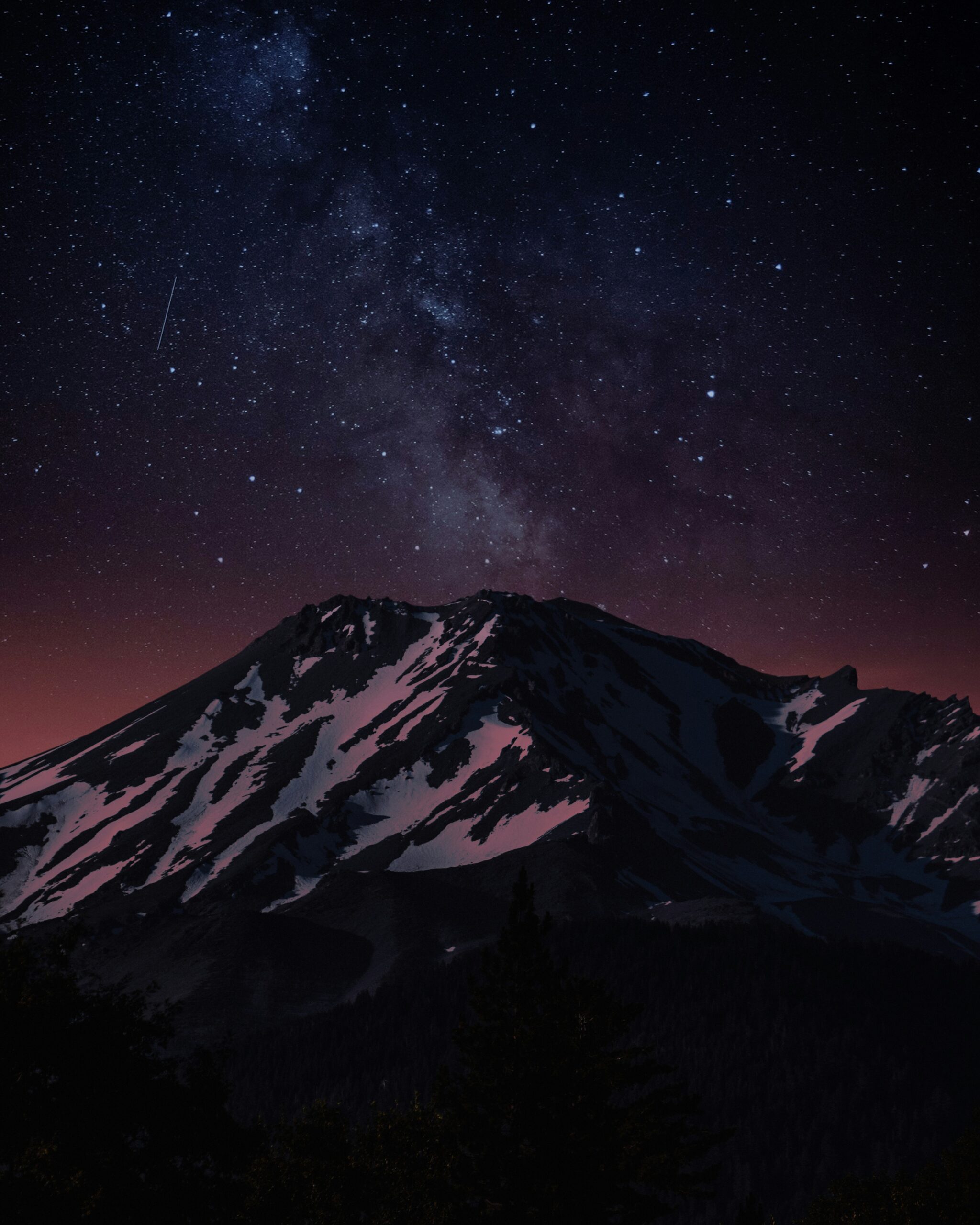Imagine standing at the foot of the majestic Mount Shasta, surrounded by its awe-inspiring beauty and mystery. As you gaze up at its magnificent peaks, your mind begins to wander, curious about the tales and legends that have been passed down through generations. Are there any fascinating Native American legends or folklore that intertwine with the enigmatic presence of Bigfoot on Mount Shasta? Join us on a journey where ancient stories and mystical encounters come together, shedding light on the captivating connection between Native American culture and the legendary creature that roams these mystical mountains.

Understanding Native American Legends
The role of legends in Native American culture
Legends play a vital role in Native American culture, serving as a powerful means of passing down knowledge, stories, and spiritual beliefs from one generation to the next. These oral traditions hold deep significance within Native American societies, acting as a bridge between the past, present, and future. Legends encompass a wide range of topics, including creation stories, nature spirits, heroes, and mythical creatures. Through these narratives, Native Americans seek to convey moral lessons, cultural values, and a profound understanding of the world around them.
Famous Native American legends and their meanings
Native American legends are rich with profound meanings that emphasize the interconnectedness of all living beings and the importance of maintaining harmony with nature. One famous legend is that of the Coyote, a trickster figure found in numerous Native American tribes' folklore. The Coyote embodies both cunning and foolishness, teaching important lessons about the consequences of one's actions and the need to acknowledge the intricate balance of the world.
Another well-known legend is the story of the Thunderbird, a powerful creature often associated with storms, rain, and fertility. These magnificent birds are said to have the ability to produce thunder by flapping their wings and create lightning with their eyes. The Thunderbird's significance lies in its representation of natural forces and the importance of respecting and honoring the environment.
How legends reflect the values and beliefs of Native American societies
Legends offer profound insights into the values and beliefs of Native American societies, illustrating their deep reverence for the natural world and the spiritual connection they hold with it. Many Native American legends emphasize the importance of living in harmony with nature, acknowledging the interdependence between humans and the environment. Through stories passed down through generations, Native Americans teach respect for nature, the wisdom of their ancestors, and the need for balance in all aspects of life.
These legends also reflect the communal nature of Native American cultures, highlighting the interconnectedness of individuals within their tribes. They emphasize the significance of community, the power of teamwork, and the belief that the collective wellbeing of the tribe is paramount.
Mount Shasta's Significance in Native American Culture
Historical importance of Mount Shasta
Mount Shasta, located in Northern California, holds great historical importance in Native American culture. Famed for its stunning beauty and spiritual aura, the mountain has long been regarded as a sacred site by many tribes. Native American tribes, such as the Shasta, Karuk, and Modoc, have maintained a strong spiritual connection with Mount Shasta for centuries.
Mount Shasta in Native American spiritual practices
For Native American tribes that reside near Mount Shasta, the mountain serves as a focal point for spiritual practices and ceremonies. These tribes believe that the mountain is a gateway to the spiritual realm, a place where ancestors and spirits reside. They often conduct rituals and seek guidance and protection from the mountain's sacred energies. Mount Shasta is considered a particularly powerful site for vision quests and spiritual awakenings.
Legends and myths associated with Mount Shasta
Mount Shasta has its fair share of legends and myths within Native American folklore. One notable story is that of the “Llao,” a giant serpent-like creature said to dwell deep within the mountain's caves. According to legend, the Llao was a malevolent spirit that would emerge from the mountain to wreak havoc on nearby tribes. The tale serves as a reminder of the forces of darkness that the Native American tribes had to contend with and conquer.
Another legend involves the “Skell,” a benevolent spirit believed to have created Mount Shasta and the surrounding landscape. The Skell is revered as a protector and source of wisdom, offering guidance to those who seek it. The presence of such legends demonstrates the significant role Mount Shasta plays in the spiritual beliefs and traditions of Native American tribes.
Bigfoot in Global Folklore
Understanding the concept of Bigfoot
Bigfoot, often referred to as Sasquatch, is a legendary creature that has captured the imaginations of people worldwide. Described as a large, hairy, and bipedal being, Bigfoot is believed to inhabit remote and forested regions. It is an integral part of folklore and legends in numerous cultures around the world, captivating the curiosity and fascination of both locals and outsiders alike.
Variations of Bigfoot in different cultures
While Bigfoot is often associated with North American folklore, similar creatures exist in various cultures worldwide. In Asia, for example, the Yeti, also known as the Abominable Snowman, is said to reside in the snowy Himalayan mountains. In South America, the Mapinguari is a creature of folklore associated with the Amazon rainforest, described as a giant ape-like creature or a formidable monster. These regional variations of Bigfoot reflect the universal human fascination with mysterious and elusive creatures that dwell in the untamed wilderness.
Scientific viewpoints on Bigfoot stories
From a scientific perspective, the existence of Bigfoot remains highly controversial. Mainstream scientific communities argue that the lack of concrete evidence, such as a body or irrefutable physical proof, suggests that Bigfoot is merely a product of folklore and myth. However, some researchers argue that the absence of conclusive evidence does not entirely negate the possibility of undiscovered species inhabiting remote regions. Despite numerous reported sightings and eyewitness accounts, the scientific consensus remains skeptical, urging for further empirical research.
Native American Interpretation of Bigfoot
How Native American tribes perceive Bigfoot
Native American tribes have their own unique interpretations and beliefs surrounding Bigfoot. Many tribes view Bigfoot as a sacred and spiritually significant being, often referred to by various names such as “Sasquatch” or “Wildman.” While some consider Bigfoot to be a physical creature that roams the wilderness, others perceive it as a spiritual entity that serves as a guardian or messenger from the spirit world. Native American tribes often regard encounters with Bigfoot as highly symbolic events, carrying spiritual messages or warnings.
Role of Bigfoot in Native American stories and legends
Bigfoot holds a prominent place in Native American stories and legends. The creature often serves as a powerful symbol, representing the untamed wilderness and the wild forces of nature. Bigfoot is often depicted as a mysterious and elusive figure, embodying the essence of the unknown and reminding humans of their place within the natural world. Many legends portray Bigfoot as a protector of nature and the balance of the ecosystem, emphasizing the importance of respecting and living in harmony with the environment.
The relationship between Bigfoot and Native Americans
The relationship between Bigfoot and Native Americans goes beyond mere legend and mythology. Some Native American tribes claim to have historical interactions and encounters with Bigfoot, considering the creature as a significant part of their cultural heritage. The presence of Bigfoot in Native American lore reinforces the deep spiritual connection these tribes share with the natural world and their ability to perceive beings beyond the ordinary realm. It also underscores the Native American understanding of the interconnectedness between humans, animals, and the environment.

The Legend of Bigfoot on Mount Shasta
Origins of Bigfoot stories on Mount Shasta
Mount Shasta has become a hotbed for Bigfoot stories and encounters, attracting attention from believers, skeptics, and researchers alike. The origins of Bigfoot tales on Mount Shasta can be traced back to Native American tribes who have long considered the mountain sacred. Accounts of sightings and encounters with Bigfoot on and around Mount Shasta have been shared among these tribes for generations, with the legend becoming deeply woven into the spiritual fabric of the region.
Specific Native American tribes' accounts of Bigfoot
Several Native American tribes in the Mount Shasta region have their unique accounts and interpretations of Bigfoot. The Karuk tribe, for example, describes Sasquatch as a guardian of nature and protector of certain sacred sites. They believe that Bigfoot can communicate with humans by mimicking their voices, serving as a bridge between the natural and spiritual worlds. The Shasta tribe, on the other hand, sees encounters with Bigfoot as a form of spiritual awakening, signaling a personal journey toward self-discovery and enlightenment.
Description of Bigfoot according to Mount Shasta tales
According to Mount Shasta tales, Bigfoot is described as a large, hairy creature standing between 7 to 10 feet tall. Witnesses often report observing powerful, muscular physiques with distinctive ape-like features, such as broad shoulders and long, swinging arms. Many accounts mention the creature emitting deep, resonant vocalizations and leaving behind footprints that defy conventional human proportions. These consistent descriptions across eyewitness testimonies further fuel the fascination and intrigue surrounding Bigfoot on Mount Shasta.
Interpreting the Bigfoot Legends
The societal implications of Bigfoot stories
Bigfoot legends hold significant societal implications, transcending beyond mere entertainment or curiosity. These stories serve as a cultural touchstone, inviting people to explore humanity's relationship with the natural world. The fascination surrounding Bigfoot encourages individuals to reconsider their place within the ecosystem and reflect on the potential existence of undiscovered creatures. Bigfoot legends also inspire discussions about conservation, highlighting the importance of preserving wild habitats and respecting the biodiversity of our planet.
Psychological interpretations of Bigfoot legends
Psychological interpretations of Bigfoot legends suggest that they tap into deep-seated human fears and desires. Bigfoot represents the unknown, tapping into our primal fear of the wilderness and the untamed forces of nature. It also awakens our curiosity and longing for exploration and discovery. The figure of Bigfoot allows us to confront our fears and desires, inviting us to question the boundaries of human knowledge and the mysteries of the natural world.
Metaphorical analysis of Bigfoot in Native American folklore
Metaphorically, Bigfoot embodies the spiritual and existential questions that humans grapple with. It symbolizes the unseen and hidden aspects of existence, urging us to venture into the unknown and challenge our preconceived notions. Bigfoot represents the pursuit of wisdom, the search for meaning, and the quest for connection with forces greater than ourselves. In Native American folklore, the elusive nature of Bigfoot echoes the importance of maintaining a sense of wonder and reverence for the mysteries of life.

Bigfoot Sightings and Encounters on Mount Shasta
Historical recordings of Bigfoot encounters
Mount Shasta has a long history of reported Bigfoot sightings, dating back several decades. Over the years, numerous witnesses have come forward to share their encounters with this elusive creature. However, it is important to note that historical recordings of Bigfoot encounters are often based on personal anecdotes and have not been scientifically validated. Nevertheless, the consistent number of sightings in the Mount Shasta region has piqued the interest of researchers and enthusiasts alike.
Eyewitness accounts and stories
Eyewitness accounts of Bigfoot encounters on Mount Shasta vary in detail and intensity. People claim to have observed the creature from a distance, catching glimpses of its massive figure moving through the dense foliage of the mountain. Some witnesses recount hearing eerie vocalizations that resemble a mix of human and animal sounds. Despite the skeptics' doubts, the sincerity and consistency of these stories cannot be easily dismissed, leaving room for speculation and further investigation.
How such sightings have influenced the Bigfoot legend
The multitude of sightings and encounters on Mount Shasta has played a significant role in shaping the Bigfoot legend in the region. These firsthand experiences have cemented the belief in Bigfoot's existence among some communities, inspiring further research and exploration. The continuous flow of sighting reports serves as a catalyst for ongoing discussions, debates, and the sharing of information about Bigfoot, ultimately contributing to the ongoing fascination and intrigue surrounding the creature.
Comparing Bigfoot Legends with Other Native American Myths
Similarities and differences with other Native American creatures
While Bigfoot is often compared to other mythical creatures in Native American folklore, certain distinctions set it apart. Unlike creatures like the Coyote or Thunderbird, Bigfoot's existence remains a subject of skepticism and controversy in mainstream society. However, Bigfoot legends share common themes with other Native American creatures, emphasizing the interconnectedness between humans and the natural world and the need for balance and respect in all interactions.
Bigfoot's unique place in Native American folklore
Bigfoot's unique place in Native American folklore lies in its embodiment of the mysterious and unknown aspects of nature. While many other creatures have specific roles and attributes within legends, Bigfoot represents an enigma, an elusive guardian of the wilderness. Its presence and influence extend beyond a single culture or tribe, captivating imaginations and inspiring speculation about the existence of ancient creatures yet to be discovered.
How the Bigfoot myth enhances our understanding of other Native American legends
The Bigfoot myth contributes to a broader understanding of Native American legends by challenging conventional perceptions and expanding the scope of human imagination. By inviting individuals to question the boundaries of their knowledge, the Bigfoot myth opens doors to exploring the depths and complexities of Native American folklore. It encourages an appreciation for the profound lessons and timeless wisdom contained within these legends, fostering a deeper connection with Native American cultures and their spiritual beliefs.
Bigfoot, Mount Shasta, and Modern Pop Culture
Influence of Bigfoot stories on films and books
Bigfoot's allure has permeated modern pop culture, with numerous films, books, and documentaries dedicated to exploring the legend. Countless fictional stories and movies have been inspired by Bigfoot, capitalizing on the mysterious and captivating nature of the creature. These portrayals often reflect humanity's fascination with the unknown and our deep-seated longing for adventure and discovery. Bigfoot has become a prominent figure in entertainment, further solidifying its place in popular culture.
Commercialization of Bigfoot in popular culture
The commercialization of Bigfoot in popular culture is evident in the plethora of merchandise and marketing campaigns focused on the creature. Bigfoot-themed t-shirts, toys, and collectibles have become popular items, appealing to enthusiasts and tourists alike. Additionally, various tourist attractions and expeditions center around Bigfoot sightings and encounters, capitalizing on the demand for immersive experiences connected to the famous legend. While the commercial aspect may seem detached from the spiritual significance of Bigfoot in Native American culture, it highlights the enduring fascination people have with the unknown.
Popular Bigfoot expeditions and tourist attractions on Mount Shasta
Mount Shasta's association with Bigfoot has attracted numerous enthusiasts and curious seekers, leading to the creation of guided expeditions, tours, and festivals centered around the legendary creature. These events offer participants the opportunity to explore the mountain's wilderness while learning about the Bigfoot legends associated with the region. While these expeditions may differ in their approach and believability, they contribute to the ongoing interest in Bigfoot, drawing attention to Mount Shasta's spiritual and cultural significance.
Preservation of Native American Legends
Efforts to sustain Native American culture and legends
Preserving Native American culture and legends is of utmost importance in ensuring the continued vitality of these treasured traditions. Many Native American tribes and organizations are actively engaged in efforts to document, record, and preserve their oral traditions, including legends, myths, and folklore. These initiatives aim to safeguard the rich cultural heritage of Native American communities for future generations, ensuring that these stories continue to inspire and educate.
Importance of educating younger generations about these stories
Educating younger generations about Native American legends is crucial for maintaining a sense of cultural identity and fostering a strong connection to ancestral roots. By teaching these stories to younger individuals, Native American communities pass on valuable knowledge embedded in their legends, reinforcing the importance of respect, harmony, and interconnectedness. Understanding these stories also encourages appreciation for diverse cultures and promotes mutual respect among different communities.
How modern Native Americans view and relate to these legends
Modern Native Americans view their legends as a means of cultural preservation and self-empowerment. These stories are held as sacred and provide a poignant reminder of ancestral wisdom and resilience. Many Native Americans find solace, strength, and a sense of belonging by engaging with their legends, fostering a renewed connection to their cultural heritage. By embracing their legends, modern Native Americans embrace their rich history and reclaim their identities in an ever-changing world.
In conclusion, understanding Native American legends and their relationship with Bigfoot on Mount Shasta provides a gateway into the rich tapestry of Native American cultures, spirituality, and beliefs. From the significance of legends in passing down ancestral wisdom to the unique role of Mount Shasta in Native American folklore, the stories surrounding Bigfoot offer insights into the deep spiritual connections Native Americans hold with their natural surroundings. As these legends continue to intrigue and captivate people worldwide, efforts to preserve and educate about Native American culture become even more vital, ensuring that these timeless stories remain a source of inspiration and cultural heritage for generations to come.
